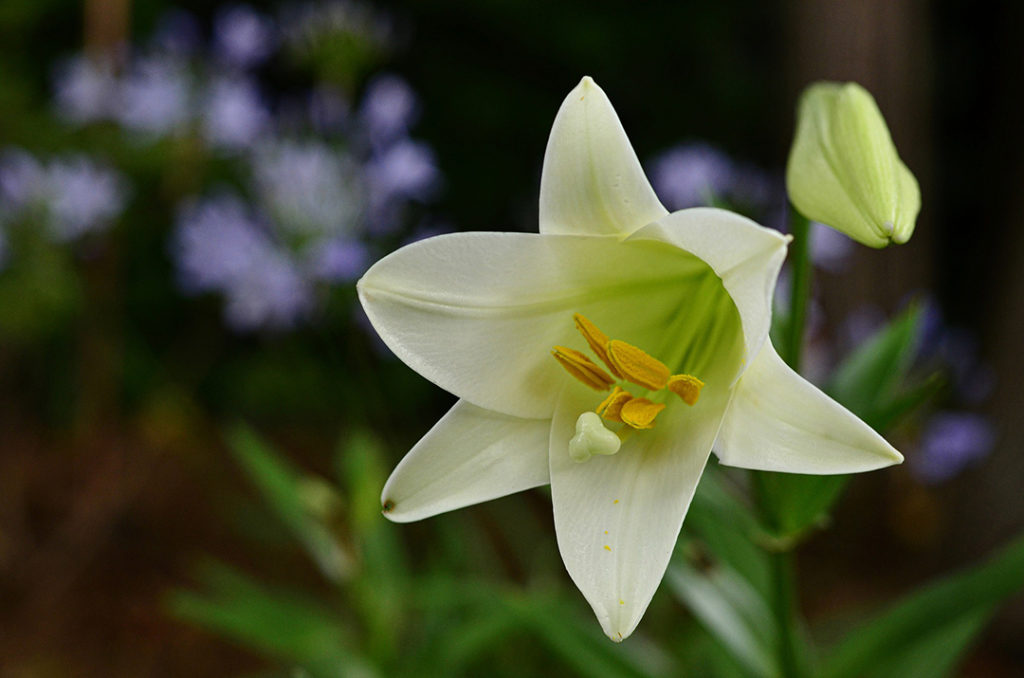
Bermuda
Bermuda Easter Lily
Lilium longiflorum

General Description / Cultural Significance
The Bermuda Easter Lily, Lilium longiflorum, originally came from the Japanese Liukiu islands, and was first introduced into Bermuda in 1853. The flower has thrived throughout the islands and generates beautiful white fields. Since 1877, the Easter Lily has been cultivated and typically blooms at Easter. The plant itself possesses large white trumpet-shaped flowers and has long been a symbol for purity and peace.
Easter is a significant holiday for Bermudians. Traditionally, lilies are picked on Good Friday, a holiday when Bermudians fly multi-colored kites. The potent fragrance of lilies commingles with the annual making of hot cross buns and cod fish cakes. Lilies are placed prominently in the homes of the people and places of worship. Every Easter, the Government of Bermuda sends a bouquet of lilies to the Queen of England. The Bermuda Easter Lily is also exported worldwide, and desired in many perfume scents.
Climate Change/Conservation Status
Fossil fuel usage in the island community of Bermuda has increased temperatures and scientists are urging Bermudians, and everybody else, to think of themselves as global citizens who can reduce their own carbon footprint and try to make an individual impact.
The Bermudian government says they are working to reduce the country’s carbon footprint, as they also address rising sea levels. Bermuda’s low-lying land has become vulnerable to repeated flooding and this is one of several major climate-driven concerns Bermudians are facing today.
Climate change impacts are unpredictable, but it is projected that Bermuda could potentially lose 14 percent of its land mass. The country’s airport passenger terminal building will need to be built significantly above sea level. In addition, storms and weather events are predicted to be more intense because of the rising ocean temperatures. Hurricanes with increasing wind speeds and intensity are already occurring.
At stake is also the most northern coral reef system, one of the most biodiverse systems in the world.
Alternate Names
Bermuda lily
White trumpet lily
Sources
The Bermudian, 2021. Field Notes: The Bermuda Easter Lily. The Bermudian Magazine. [website]
Bermuda Department of Tourism, New York, NY. This statement can be found on the World Sensorium original website.
Francis, J.A., Rumbeiha, W., & Nair, M.G., 2004. Constituents in Easter lily flowers with medicinal activity. Life Sciences, 76(6), pp. 671–683. DOI: 10.1016/j.lfs.2004.10.001
Glasspool, A. F., 2008. The Impact of Climate Change on Bermuda. The Bermuda National Trust. pp. 190.
Leber, J., 2018. Island of Coral Resilience Shows Hope and Limits for Reef’s Future. Oceans Deeply. [website]
Rodriguez, A., 2019. How Does an Easter Lilly Flower Pollinate? SFGate. [website]
Weed, C.M., 1898. The Bermuda Easter Lily. The Journal of Education, 47(14), pp.213–214.

